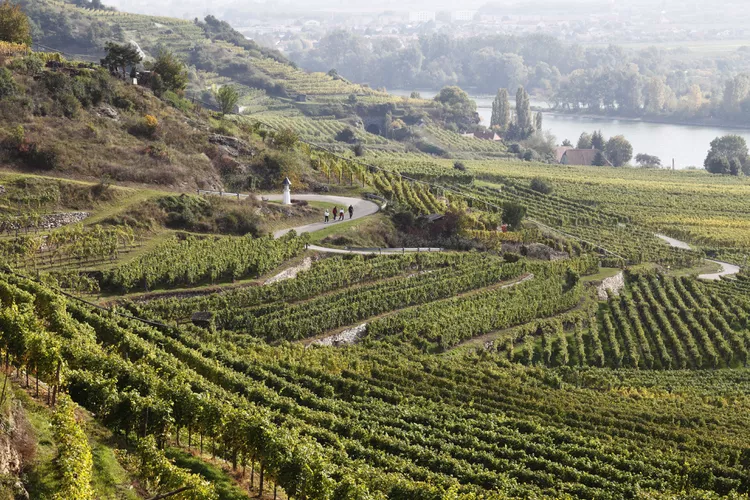Summary
Certainly, you’ve heard some tales from the Vienna Woods. If you’ve listened to Strauss lately, you have. In any case, you wouldn’t think woods would be conducive to growing grapes; however, if you’re thinking about getting out in the countryside and enjoying some great food and wine, the area around Vienna is a perfect choice.
The federal states of Lower Austria (Niederösterreich), Burgenland, and Styria are renowned wine-growing regions.
When exploring Austrian wines, you will encounter various quality ratings on bottles: Tafelwein (table wine), Qualitätswein (quality wine), and Prädikatswein (“certified” quality wine). This guide will assist you in gaining insight into these wine regions.
Lower Austria Wine Region

Lower Austria offers off-the-beaten-path adventures—alongside some remarkable wines. It’s important to note that the Lower Austria wine region primarily comprises smaller regions located in the north.
The Wachau region, for instance, is renowned for its ancient terraces where many vineyards are situated. Consequently, it has been recognized as a UNESCO World Heritage site. Riesling is the primary grape varietal here; however, you’ll also find Grüne Veltliner, Chardonnay (Feinburgunder), and Gelber Muskateller. The region experiences less rainfall compared to others, resulting in bold, robust wines.
Burgenland Wine Region

Visitors are often drawn to the Neusiedler Lake (Neusiedlersee) area, which lies along the Hungarian border. This region produces fine, dry white wines, along with a selection of quality red wines. Neusiedler Lake, being very shallow, creates an environment conducive to noble rot, thus yielding exotic sweet wines. As a popular recreational area, it is also home to a notable bird sanctuary and is recognized as a UNESCO World Heritage site.
Village wineries, such as Rust or Mörbisch, offer a charming experience for wine enthusiasts. In summer, the Mörbisch Festival on the Lake takes place. Mörbisch is conveniently located just north of the Hungarian border and approximately 60 km south of Vienna.
Steiermark – Styrian Wine Region

If you’re seeking picturesque patchwork vineyards and rolling hills, the Südsteiermark region (southern Styria) is a must-visit. The varietals produced here are well-known to American wine drinkers. In this southwest Styria region, don’t miss trying Gewürztraminer and the dry late harvest Traminer.
Wien – Vienna Wine Region

Vienna uniquely stands as a European capital with a significant wine-producing region within its city limits. Though you may not find these wines in stores, they are typically enjoyed at traditional wine bars known as Heuriger.
Vienna is not only a provincial capital but also an independent wine-growing area with roughly 700 hectares dedicated to viticulture. Approximately 85% of these vineyards focus on white grape varietals. Popular types include Riesling, Weissburgunder, Grüner Veltliner, Sauvignon blanc, and Gelber Muskateller, which produce distinctly fruity and elegant wines. Moreover, a growing number of winemakers in Vienna are experimenting with red varieties, particularly Zweigelt and St. Laurent, alongside trendy international varietals such as Merlot, Pinot noir, and Syrah.
The Vienna Woods

The Vienna Woods, which encompasses the western rim of the Vienna basin, offers a protected green belt filled with numerous hiking trails. The surrounding villages often feature Heurigens or wine taverns with exceptional food, wine, and live music. Moreover, do not overlook the Heiligenkreuz Abbey situated in the southern Vienna Woods.
Walks In and Around Vienna

The City Forestry Office in Vienna has laid out and signposted 13 walks (and longer hikes) accessible via public transport within and around the city. Each route offers detailed maps, sightseeing recommendations, and suggestions for restaurants, making it easy for visitors to explore this beautiful region.
Championship of Austrian Wine Towns – The Floh Wine Cup
Most wine competitions may seem unexciting; however, when Josef Floh organizes his annual Floh Wine Cup, things take a lively turn.
While you might not receive an invitation to this year’s wine competition, you can definitely visit his restaurant in Langenlebarn, Langashoaus Floh.





